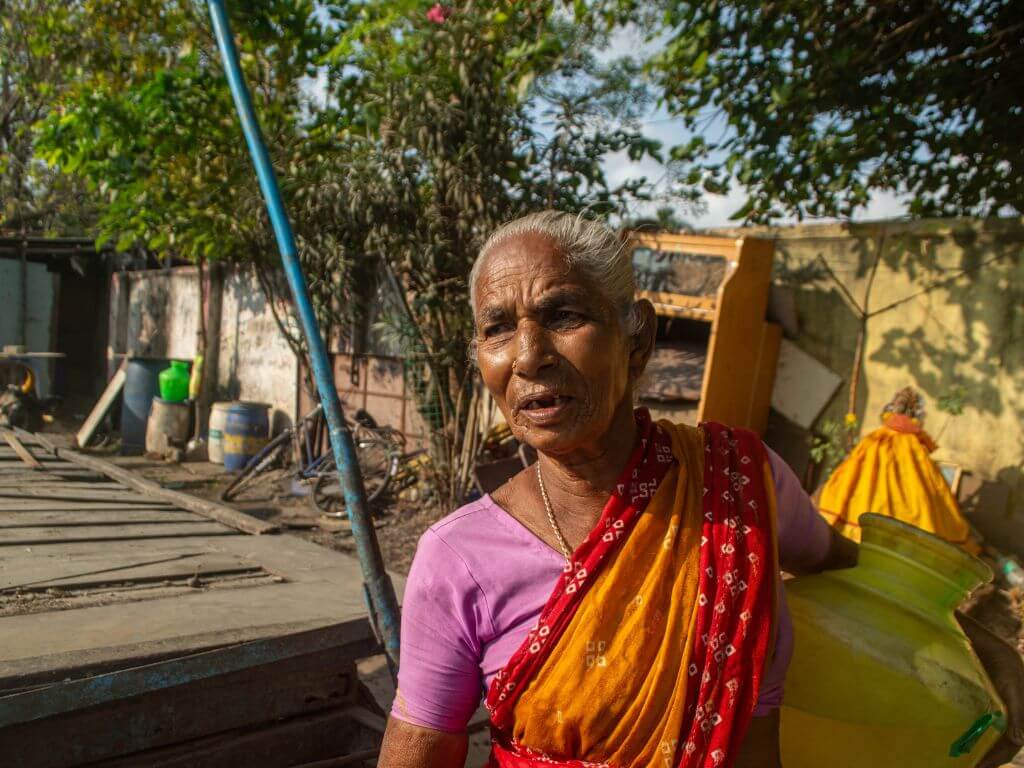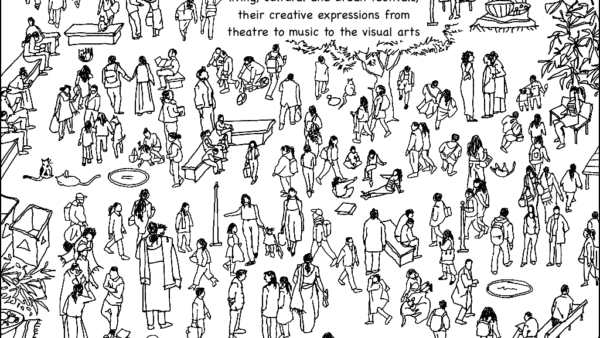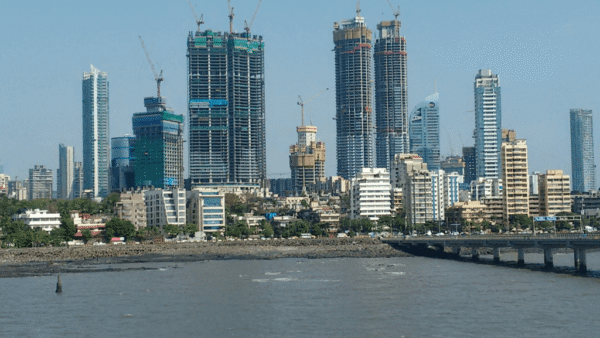In 2015, Chennai faced one of its worst floods, submerging houses and roads, impacting lives and businesses. Its main reservoirs — Poondi, Cholavaram, Redhills and Chembarambakkam, located 25-50 kilometres from the city, overflowed, causing devastation and havoc. Later, it was ascertained that the floods were as much human-made as they were an impact of climate change. Mindless concretisation has impeded water percolation to the ground, affecting the city’s sponginess, and thereby its ability to replenish its groundwater reserves when it rains.[1]
The reservoirs that overflowed in 2015, causing floods, dried up in June 2019 and Chennai declared June 19 as Day Zero – a day when no water was left for use. Usually, the reservoirs fill up towards the end of the Northeast monsoon, or the retreating monsoon, which helps to supply nearly 200 million litres of water per day (mld) until the next monsoon, but that year, it could not last. The city’s requirement of 830 mld remained unmet; the Chennai Metropolitan Supply and Sewerage Board (CMWSSB) was able to supply only 525 mld on the worst days of the crisis. When all else fails, we turn to tankers. In 2019, even these had a waiting period of 15 to 25 days. A 9,000-litre tanker from the CMWSSB costs us Rs 700 to Rs 800 which means a good part of our incomes were spent on just getting water.[2] In low-income areas like Vyasarpadi, where I live, this means a lot.
Chennai has an average rainfall of 1,400 millimetres, higher than the country’s average. However, it suffers from the lowest per capita availability of water among India’s mega cities.[3] It is projected that the city with an area of 1,198 square kilometres will require 2,365 mld by 2030. However, there may be a shortfall of 466 mld between demand and supply.[4]
Chennai’s water distribution is a limited piped water supply network concentrated in the core areas. The working class and the marginalised live in north Chennai, which also has many factories. The city has developed in the south leaving the north to largely fend for itself. For example, we have fewer trees than south Chennai does. One would think that while a city like Chennai develops, no parts of it will suffer from water shortages, but Vyasarpadi and its surrounding areas in northern Chennai, have always faced water problems. We get tap water only twice a day, for two hours each.
In this photo essay, I show how we in Vyasarpadi – and similarly neglected areas – build our lives around accessing water. The water crisis is not seasonal for us, it is round-the-year. Women carry the load of collecting, carrying and storing water, no matter what other work they do. Girls are initiated into this chore when they are barely 6-7 years old. Young girls queue up at community taps, handpumps, and tankers before leaving for school and college, women spend precious minutes here before leaving for work – just to fetch five pots of water.
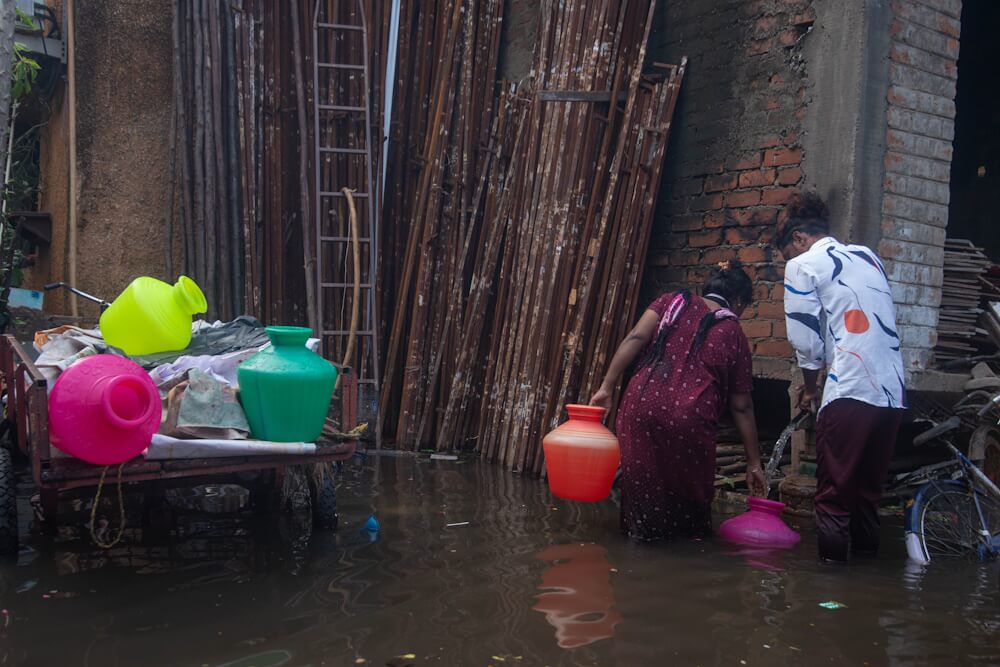
Residents of Vyasarpadi had to wade through flood in December last year to line up for potable water from the community taps (far right) even as caste issues played up.[5] Each tap is shared by 60 houses making water access a herculean task. A house usually has two or three drums outside its entrance, each drum holding 200-250 litres which is barely sufficient for a family of four or five.
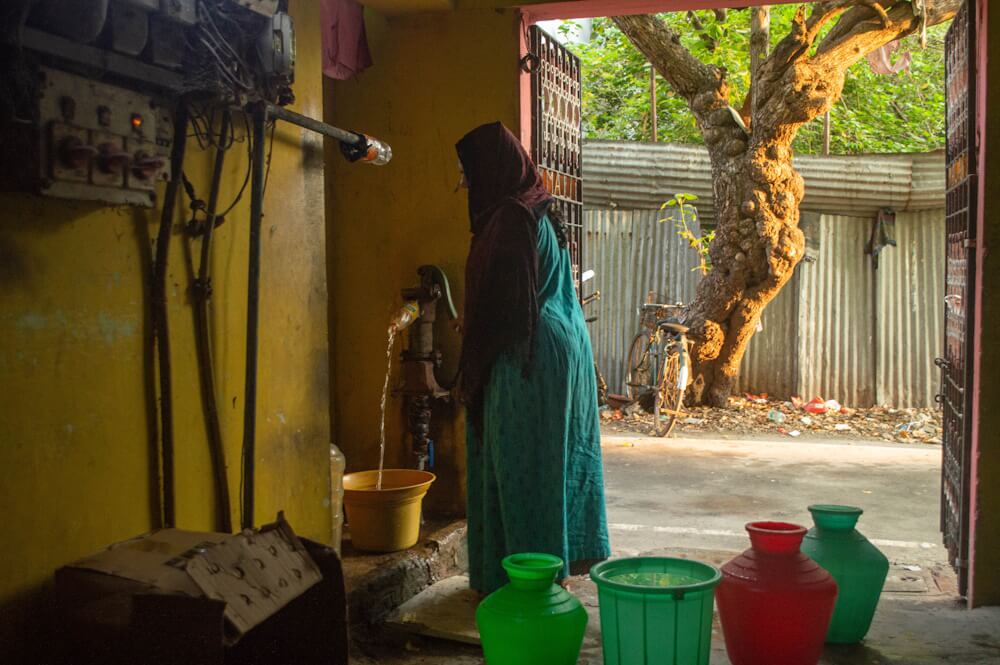
This is my mother Fatima Beevi, 38. A daily wage worker, she goes to the community tap to fill water though there is a community pump in my apartment with 24 houses. Water is supplied to us from 4am to 6am every day and each household is allowed only five cans or pots of water. Look closely and you will see that the water supply is actually a trickle. This is the story throughout the area.
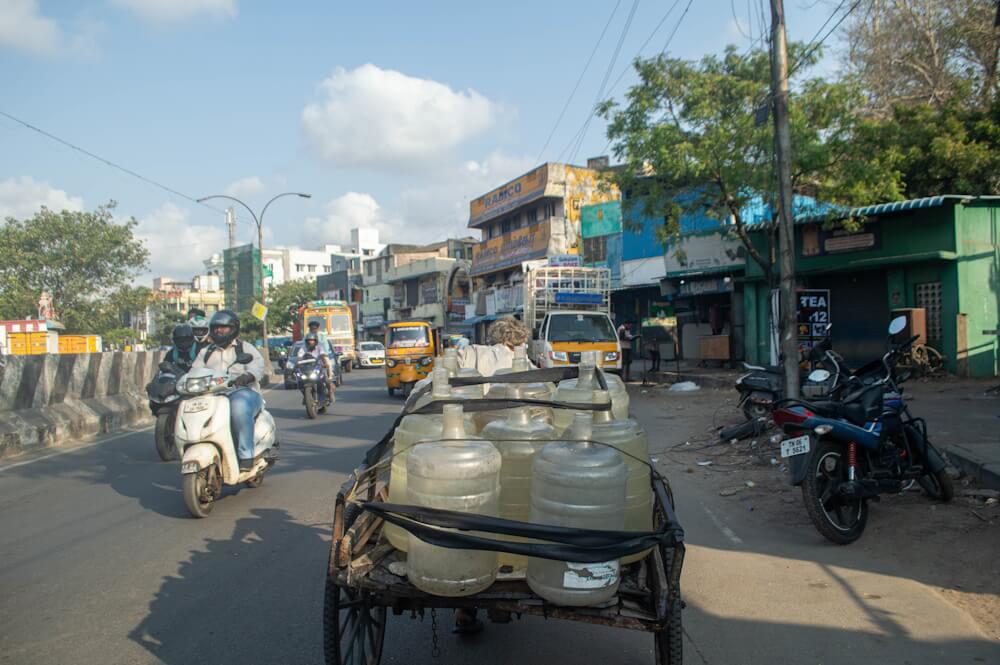
If the nearest water pump does not have supply on a given day, we have to rent a rickshaw for Rs 20 to Rs 50, depending on the distance, and carry our vessels to another water source which may be three to four kilometres away. This water run can take at least an hour of our time in the mornings and it upsets our daily routine. Our life revolves around collecting water for the whole family. It is tiring and frustrating at times. With small houses measuring 8×8 feet, there is hardly any space for us to rest after doing the physically intensive work of fetching water.
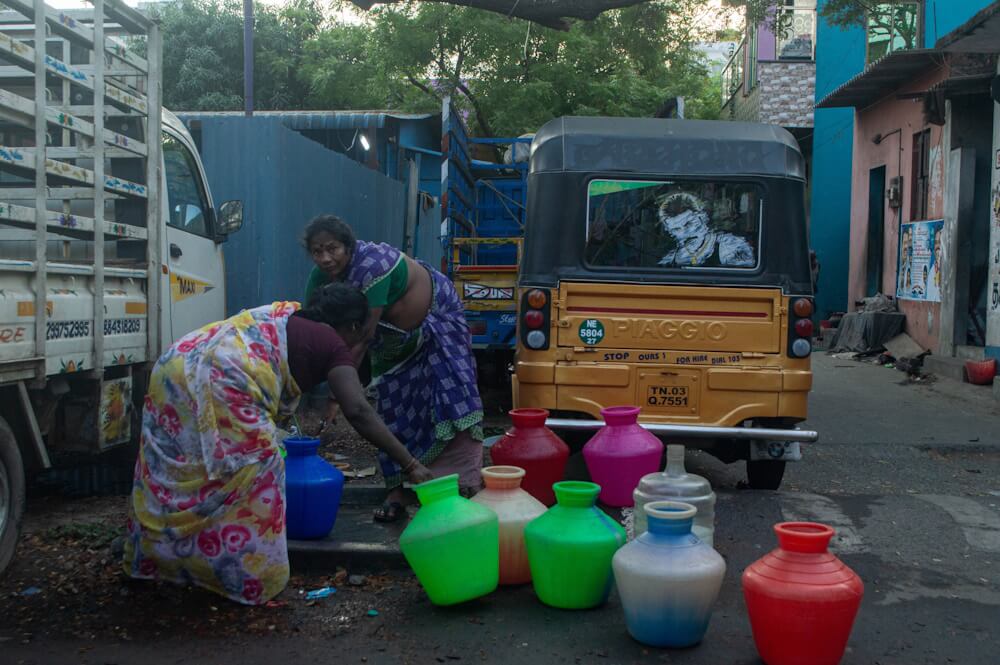
In Vyasarpadi, women like Kanaghi, 50, a daily wage worker, and Sasikala, 38, a woodworker, fill water from the community pump before they leave for their work. Collecting water, transporting it to one’s house, storing it well before cooking for the family adds to the women’s work, often tiring them out even before they have started their paid work. Many like Sasikala have been doing woodwork, or Kattaadikiradha, crafting wooden pieces that are affixed into walls to hold nails that are hammered in. It is tedious work and becomes exhausting for many women worrying and working to get water.
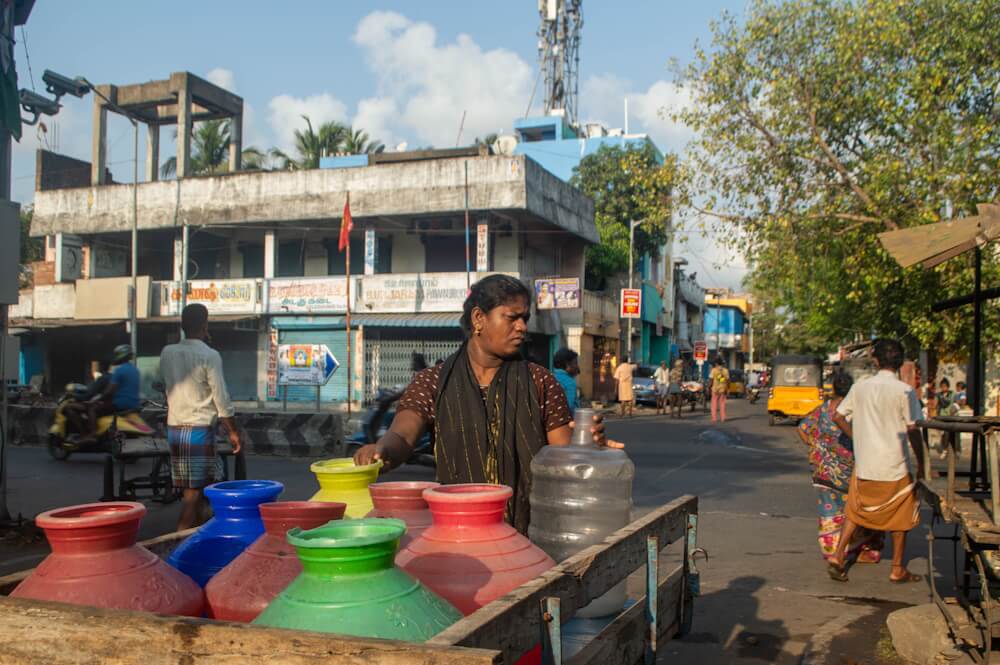
Some families in Vyasarpadi group together to rent cycle-rickshaws or carts (above) to transport water from the community hand pump to their homes. This costs us Rs 20 to Rs 50 an hour. Not everyone can afford the additional expenses and fall back on the old method of physically carrying water to their houses. Rajeswari, 36, a daily wage worker, walks with the water for her family of seven. Her daughters – Jhansi Mary, Jasmine Mary, Jennifer Mary – help her. “They often cannot reach school on time. But my hands and back hurt, it takes up at least two hours of my day…If there was a pump next to our house, it would be easier for all of us,” she says.
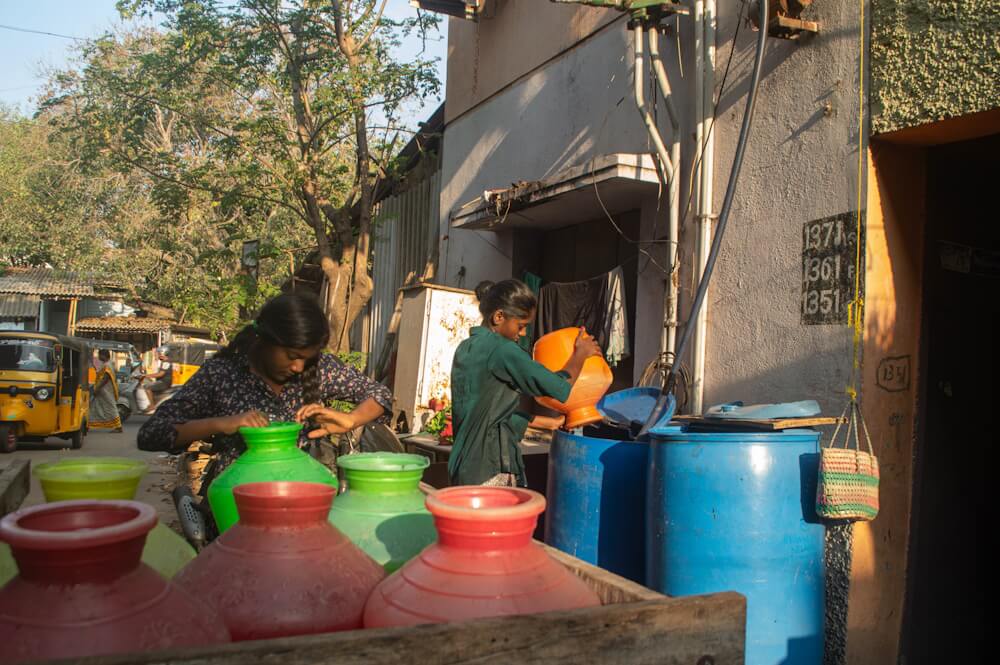
Jhansi Mary and Jasmine Mary, in Class 7 and Class 8 respectively, are exhausted even before they reach school. They are too tired to study or stay alert in school because the daily routine saps the energy out of them. They suffer the most when they have exams because fetching water is seen as “routine”, and not a task that demands additional labour and time. In and around Vyasarpadi, it is common to find young girls and women being late to reach schools, colleges and workplaces; their priority is to get water for their families.
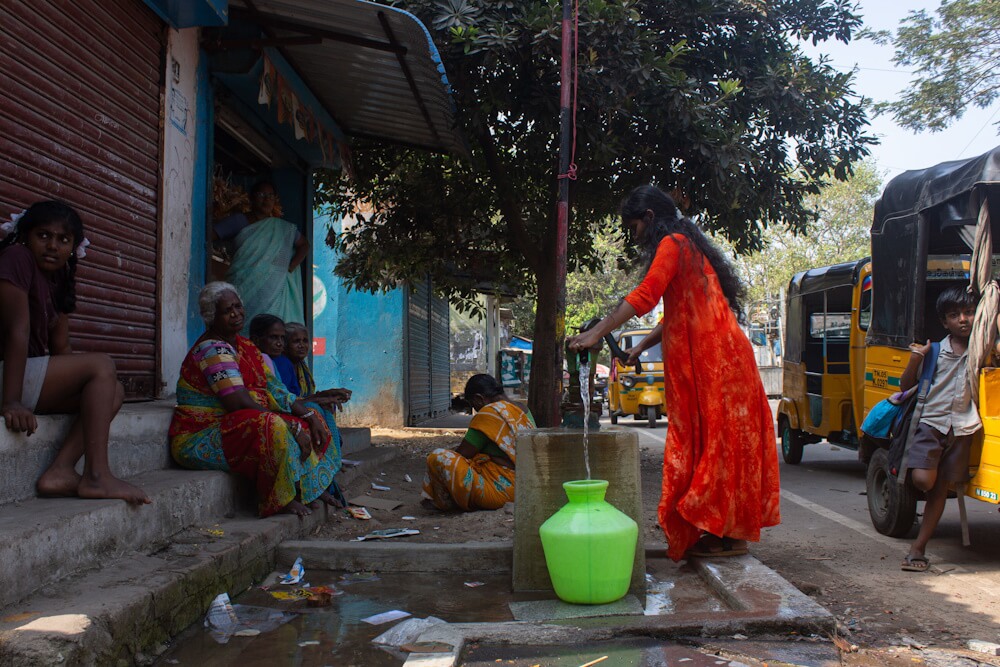
Nandhni, a journalism student, like all of us here, pumps out water for her family of seven every day before going to college. “We depend on this water for everything. Our daily lives cannot happen without water,” she says. She, her mother and sister are responsible for fetching and managing water for the family. The hand pump serves 60 households which means Nandhni often gets only two pots of water despite standing in the queue for hours. This is taking its toll. “If I go to fetch water in the morning, I don’t get time to study. I have had boils on my hands since I was young because of pumping the water. My hips also hurt from carrying the water but I have no option.”
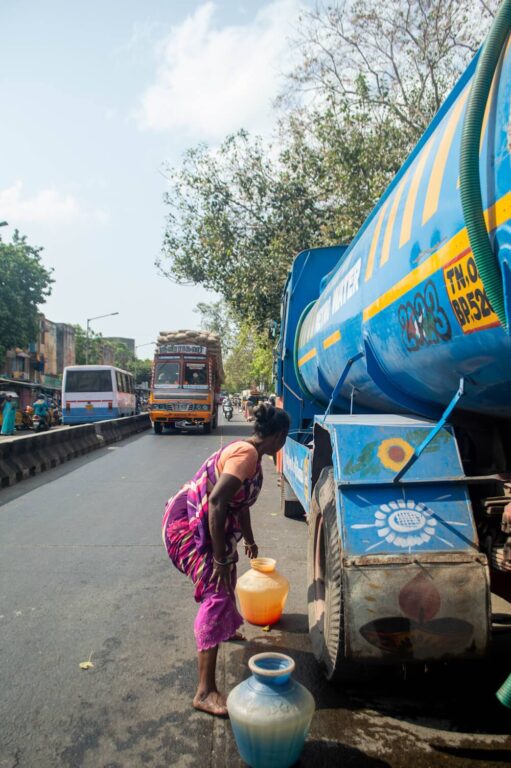
“The slum clearance houses have at least one water pump but we live in tin-shed houses without a pump. We need at least one here,” says Madhavi, 45, a daily wage worker who has no access to borewell water pumped in Vyasarpadi. Residents like her pay the tankers for their daily supply and then shell out more for drinking water separately because this water is not potable. Most people earn a salary of around Rs 200 to Rs 300 a day of which they spend Rs 30 for 25 litres of drinking water.
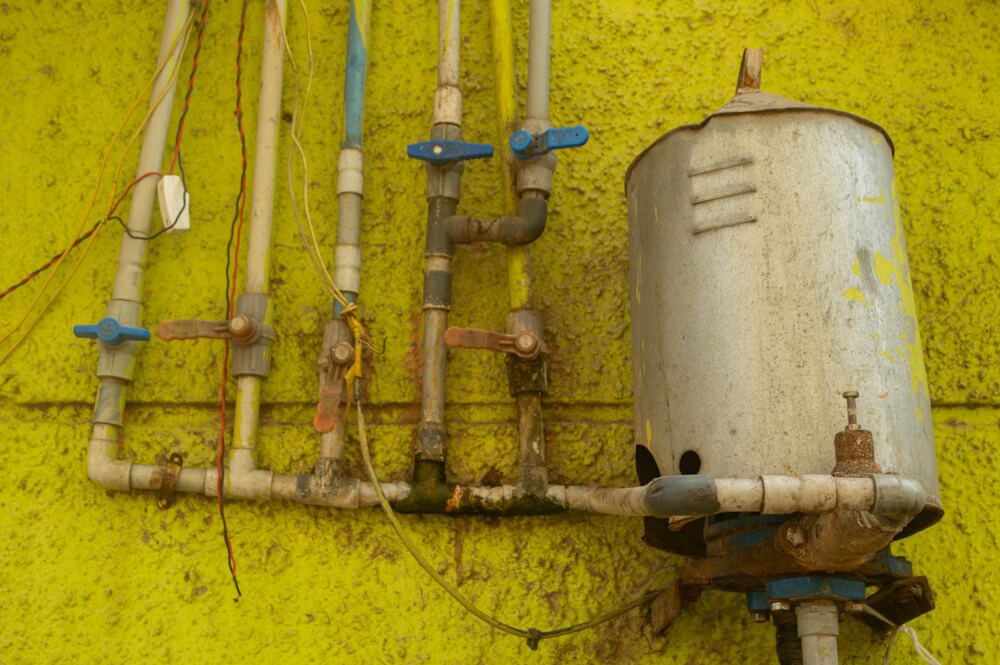
Most houses here have overhead tanks which are filled with the help of a motor. Here, you can see six connections for as many households from one motor; each family pays for one connection. In households that can afford this, women are saved the drudgery and the time of physically collecting and carrying water up the stairs. They lug dozens of pots and containers of water from the community pump or tanker every day. The constant struggle to get water has put women’s health at risk with many facing abdominal and reproductive issues, and others undergoing early hysterectomies.
“Rain combined with appropriate storage mechanisms is the key to solving water scarcity. Chennai lacks enough storage systems for water, resulting in a very high runoff of rainwater. The water storage systems were designed with 1960s population density in mind and currently, the infrastructure is not sufficient to fulfil the city’s water demand,” remarked researcher Swati Hegde, from the Water Center at University of Pennsylvania’s School of Arts and Sciences.[6]
I live through this and, over the years, have seen women in my neighbourhood go through the sheer toil and exertion of managing water. However, this is not considered a chore or seen as contributing to health problems; instead, it has been normalised and seen as part of our routine just we wake up, eat, and go to work. Do the authorities know? They should be aware but I am not certain how much they care about Vyasarpadi and neighbourhoods like ours when it comes to water supply.
Rasiya Banu has a Bachelor’s of Arts degree in Economics. A Chennai resident, she has been going through the problems caused by urbanisation and climate change. A keen photographer, Banu loves to document the lives of people and narrate their stories, and is part of the cohort of under-privileged young people being trained to tell their own stories. All the photos are by Banu.

